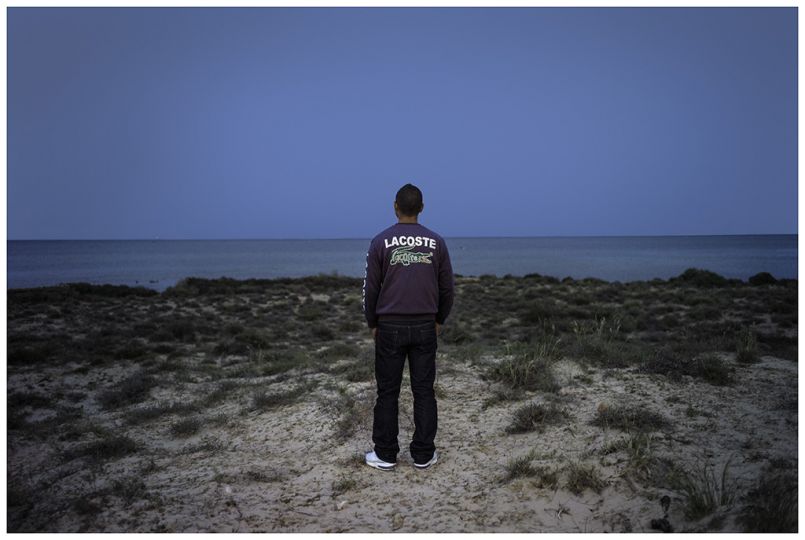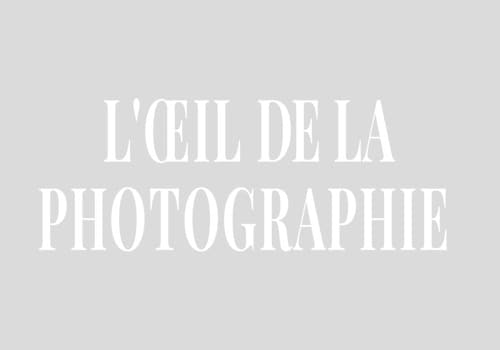The exhibition at the Maison européenne de la photographie and a book published by the Éditions Xavier Barral bring to a close Patrick Zachmann’s work on China spanning over thirty years. Combining black-and-white and color, gelatin silver and digital photography, the different series brought together constitute something of a retrospective for the Magnum photographer. A co-sponsor of the exhibition, the Picto photo lab has produced the prints exhibited at the MEP, inspiring The Eye of Photography to take an in-depth look at the printer–photographer relationship in a conversation with Patrick Zachmann and Fred Jourda, a color print specialist at the lab.
How did you first meet?
Patrick Zachmann: I think it was over the Mali project, some twenty years ago, on the occasion of an exhibition held at La Villette which included, among others, diptychs combining color and black-and-white photos.
Fred Jourda: I did the color prints and Param did the B&W, because since I joined Picto in 1986 as a Louis-Lumière School graduate, I’ve always worked exclusively on color. Picto and I go back a long way: my father worked there from 1960 to 2004; that’s where I did my first internship… This job is both a vocation and a passion.
What is the proportion of color and B&W photography in your work?
Patrick Zachmann: I’d say, 40–60%. Initially, I was a B&W photographer in the tradition of street and social documentary photography… But then it grew old, exhausted itself. So I switched over to color because I don’t like repeating myself too much. Since then, I’ve gone back and forth… It took me a while to find my way or, rather, my vision in color because, at the beginning, I worked with slides and I’ve never liked saturated color rendering. I found my style when color film became more efficient. It took some time because color is very tough to work with…
Fred Jourda: It is indeed very complex … all the more so because everyone perceives colors in a unique fashion; subjectivity plays an important part…
Which is more subjective, color or B&W?
Patrick Zachmann: In any case, I find it is more difficult to go beyond the documentary aspect of reality when working in color. Black and white is actually already a transcription of reality because we see in color. Plus, black and white stamps out, erases some details and accentuates others, such as facial expressions, emotions, poetry… In color, everything becomes either information or kitsch… When you go from one to the other, you need to look through a different set of lenses, so to speak. The process must in any case be different. And when one is interested in people, like I am, color complicates things… Sometimes, there’s a conflict: the eye is both attracted to patches of color and to the human element… Some photographers work in color but overemphasize their subject and people, and don’t pay enough attention to the color…
Working in color and being a colorist is not the same thing…
Patrick Zachmann: What interests me in color photography is that it’s a whole other way of seeing. For example, the series Impressions de nuits (Night Impressions, 2001–2007) departs from news coverage: we’re in the realm of poetry, dreams…
Fred Jourda: That’s right, and this is the domain of the colorist.
To produce better prints of an artist’s images, how important is it to love your job?
Fred Jourda: It’s always better to work with empathy. My job is above all to satisfy the photographer. If you value someone, it’s a plus because in the long run you need to develop a relationship of trust. Printing is a lengthy process, there is a lot of give and take.
Patrick Zachmann: We worked together four or five times. Of course, a printer can’t love all the artists, but there needs to be complicity at a human and professional level, since the relationship can have its difficulties. As a photographer, I have some requirements. Sometimes, tension arises; it becomes necessary to negotiate…
Especially that a seasoned photographer such as yourself must have a rather specific vision of what he wants… Have you ever been in disagreement?
Fred Jourda: It is important to be attentive to the photographer and do what they want, rather than how one feels as a printer. It’s a question of figuring out what the photographer expects in terms of density, color rendering, etc. The difficulty lies in understanding what they want and to transcribe it…
Patrick Zachmann: Working with Fred, I appreciate the dialog. It’s never painful, which is not true in every case. I have to say that I make a habit of working and reworking the image until I’m satisfied. It may be once, twice, more if necessary. There have been times when Fred made me change my mind about certain interpretations because we really exchanged
How do you get started? Do you get specific instructions?
Fred Jourda: To start off, we discuss the circumstances in which the shot was taken, the series as a whole, and the project in general. Then we move on to reviewing the contact sheets… Oftentimes, I produce working prints as a reference, and then try to get closer to the goal. When doing small formats, I print the image as a whole; in the case of large formats, like for example 60×90, I do test strips that I submit to Patrick who then corrects them: lighter, darker, less red… Once he’s ok, I print the image as a whole, show it to him, he approves it… We repeat this operation for each print.
Patrick Zamann: For me, the first stage is important. I tend to micro-manage the process; it’s a necessity for me… And in the end, it saves time.
Fred Jourda: Patrick is one of those photographers who know what they want… This is not true of everybody, in which case it’s my job to guide them.
Besides B&W photos printed by Payram and color prints made by Fred Jourda, you have also used Picto’s online service. Could you explain that decision?
Patrick Zamann: With Picto’s collaboration I was able to design the MEP exhibition the way I had imagined it. So I was able to emphasize my work in film. But after some discussions with François Georges (Picto), we decided that other images didn’t need as much attention, namely the series Face aux Mingong (Facing the Mingong, 2006–2007) and Retour à Wenzhou (Return to Wenzhou, 2005–2007) which are more journalistic. For budgetary reasons, I had prints made through the Picto online service. First, I ran some tests by carefully preparing the files to ensure good results, and in the end, I was satisfied. This type of image made it possible, but I have to admit that I would hesitate before taking the risk with a larger series…
EXHIBITION
So long China
Patrick Zachmann
From April 6th to June 5th, 2016
MEP – Maison Européenne de la Photographie
5/7 rue de Fourcy
75004 Paris
France
Prints made by Picto Lab.
http://www.magnumphotos.com
http://www.mep-fr.org/
ALSO
Extérieur Chine
Photographs by Patrick Zachmann, 1982-1992
From April 5th to June 27th, 2016
Boîte Arts graphiques
Musée du quai Branly
37 quai Branly
75007 Paris
France
http://www.quaibranly.fr
BOOK
So long China
Patrick Zachmann
Xavier Barral Editions
17 x 22,5 cm
592 pages
345 color and B&W photographs
45 € TTC
ISBN : 978-2-36511-093-8
Limited Edition
Signed copy with signed B&W print
1 – 50 copies
400 € TTC
http://www.exb.fr




















